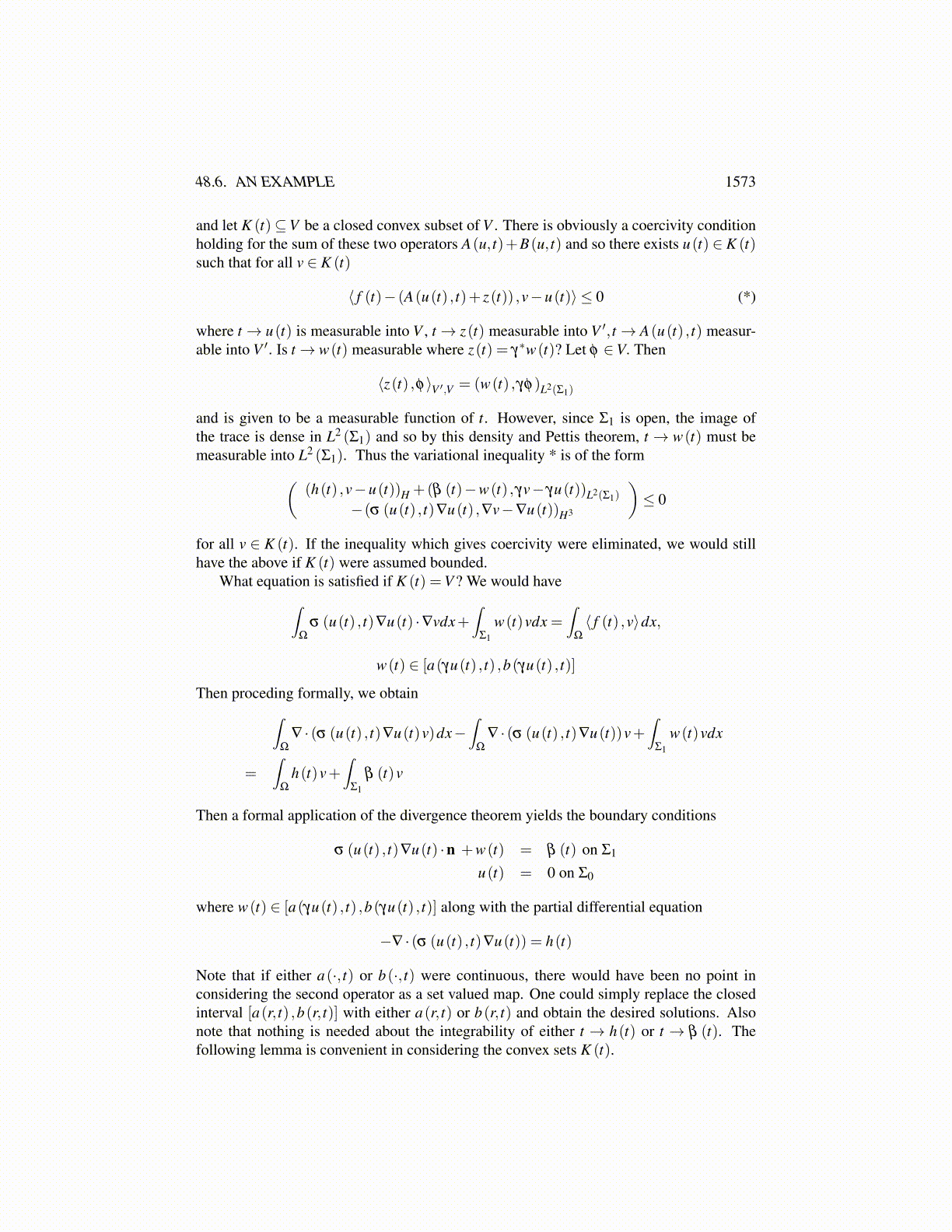
48.6. AN EXAMPLE 1573
≥∫
Ω
σ (un, t)∇u · (∇un−∇u)+∫
Ω
σ (un, t)∇un · (∇u−∇v)
The second term in the above converges to∫
Ωσ (u, t)∇u · (∇u−∇v).
Consider the first term after ≥ . It equals∫Ω
(σ (un, t)−σ (u, t))∇u · (∇un−∇u)+∫
Ω
σ (u, t)∇u · (∇un−∇u) (*)
The second of these terms converges to 0 because of weak convergence of un to u. As tothe first, if the measure of E is small enough, then(∫
E|∇u|2
)1/2
< δ
By Egoroff’s theorem, there is a set E having measure this small such that off this set,σ (un (x) , t)−σ (u(x) , t)→ 0 uniformly for x /∈E. Thus an application of Holder’s inequal-ity shows that |
∫EC (σ (un, t)−σ (u, t))∇u · (∇un−∇u)| ≤ δ whenever n is sufficiently
large thanks to the weak convergence of un to u which implies that ∇un−∇u is boundedin L2 (Ω)3. As to the integral over E, the fact that σ is bounded for fixed t implies theexistence of a constant C independent of n such that∣∣∣∣∫
Ω
(σ (un, t)−σ (u, t))∇uXE · (∇un−∇u)∣∣∣∣≤C
(∫E|∇u|2
)1/2
<Cδ
Thus the first term in * has absolute value no larger than (C+1)δ provided n is sufficientlylarge. Since δ is arbitrary, the limit of this term is 0. Thus,
lim infn→∞
∫Ω
σ (un, t)∇un · (∇un−∇v)≥∫
Ω
σ (u, t)∇u · (∇u−∇v)
This is a contradiction. Thus the liminf condition must hold.Next consider another operator. Let Σ1 be ∂Ω⧹ Σ0 and has positive surface measure.
Let r → a(r, t) be lower semicontinuous and r → b(r, t) be upper semicontinuous. Let0 < δ (t) ≤ a(r, t) ≤ b(r, t) ≤ 1
δ (t) . Also let both of these functions be measurable in t.
Now γ : V → L2 (Σ1) and so γ∗ : L2 (Σ1)→ V ′ defined in the usual way. Then z ∈ B(u, t)will mean z = γ∗w for some w ∈ L2 (Σ1) with
w(x) ∈ [a(γu(x) , t) ,b(γu(x) , t)]
for a.e. x such that⟨z,v⟩=
∫Σ1
w(x)γv(x)
Using Sobolev embedding theorems, if un→ u weakly in V , then from the Sobolev em-bedding theorem un→ u strongly in a suitable Sobolev space of fractional order such thatthe embedding of V into this space is compact and the trace map is still continuous. Thusthere is a subsequence such that γun (x)→ γu(x) pointwise a.e. and wn → w in L2 (Σ1).